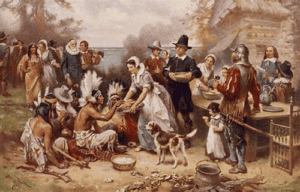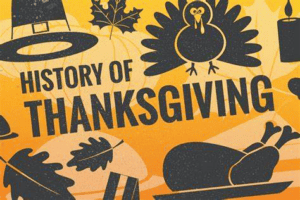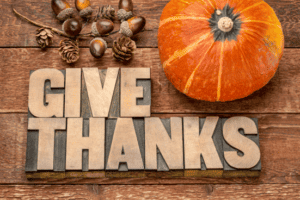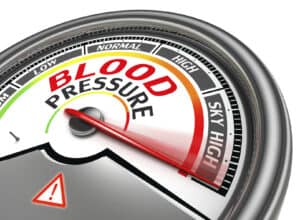
Thanksgiving Day, marked annually in the United States and Canada, is more than just a feast; it’s a mosaic of history, culture, and gratitude. This holiday, celebrated to honor the harvest and blessings of the past year, intertwines the threads of historical events, cultural traditions, and a universal spirit of thankfulness.
Historical Origins
The roots of Thanksgiving trace back to 1621, when the Plymouth colonists and the Wampanoag people shared a harvest feast, now acknowledged as the first Thanksgiving. This event followed a perilous journey on the Mayflower, which set sail from Plymouth, England, in September 1620. The 102 passengers, comprising religious separatists and individuals seeking a new life, faced a grueling 66-day journey. Upon arrival, their survival was uncertain until the intervention of Native Americans, including Squanto, who taught vital survival skills and facilitated an alliance with the Wampanoag tribe.
Role of Native Americans
The Wampanoag people played a critical role in the survival of the Pilgrims and the establishment of the feast. Their knowledge of the land and agricultural techniques was indispensable. This partnership, although strained in later years, is a vital part of the Thanksgiving story, reflecting early instances of intercultural cooperation.

Evolution of the Holiday
From colonial days, Thanksgiving evolved, incorporating European traditions of days of thanksgiving for safe journeys, peace, and bountiful harvests. George Washington, during his presidency, issued the first Thanksgiving proclamation by the national government, calling for gratitude for the successful end of the War of Independence and the ratification of the U.S. Constitution. However, it wasn’t until Abraham Lincoln’s 1863 proclamation, amidst the Civil War, that Thanksgiving became an official annual holiday. Later, Franklin D. Roosevelt, seeking to extend the Christmas shopping season, shifted the holiday’s date, eventually leading to Congress fixing it to the fourth Thursday in November in 1941.
Traditions and Symbolism
Today, traditional fare like turkey, stuffing, cranberry sauce, and pumpkin pie adorn Thanksgiving tables, reflecting both historical and modern tastes. The holiday has transcended its origins to symbolize intercultural peace, America’s opportunity for newcomers, and the sanctity of home and family. Modern Thanksgiving is also associated with football games, parades such as the Macy’s Thanksgiving Day Parade in New York City since 1924, and the presidential turkey pardon.
Impact on American Culture
Thanksgiving has deeply influenced American culture, finding its place in literature, film, and art. It reflects the nation’s values of family, gratitude, and inclusivity. For various cultural groups in the U.S., Thanksgiving has become a symbol of American identity and a celebration of multiculturalism. Additionally, Thanksgiving marks the beginning of the holiday shopping season, known colloquially as Black Friday. It’s also one of the busiest travel times in the U.S., reflecting its importance in American social life as families gather to celebrate.

Thanksgiving as a Reflection of Gratitude and Community
Beyond its historical and cultural dimensions, Thanksgiving in the United States symbolizes a profound sense of gratitude and community. It’s a time when Americans, regardless of their backgrounds, come together to celebrate and give thanks.
Conclusion
Thanksgiving in the United States transcends its historical roots to become a broader symbol of gratitude and community. It’s a day that encapsulates a moment of nationwide reflection and appreciation, where Americans pause to count their blessings and acknowledge the good in their lives. This holiday brings together people from all walks of life, fostering a sense of unity and collective gratitude. It embodies the American ideals of opportunity, allowing people from various backgrounds to infuse their unique cultures and traditions into the celebration. This blending of customs enriches the holiday, making it a true reflection of the melting pot that is America. Thanksgiving thus stands not just as a historical commemoration but as a living, tradition that continually redefines what it means to be part of the American community.
Above all, this Thanksgiving holiday, remember to give thanks to all those in your life and around the world who make it so special. We take this moment to say thank you to our clients, partners and community for making a difference.
Have a great weekend!
Source: Located at the bottom of the articles
Golf Tip of the Week
3 Ways AI Helped Me Improve My Golf Swing (And Can Help Yours, Too!)

Artificial intelligence is a fascinating subject and one that’s quickly seeping into industries all over the planet.
Including the golf industry.
It’s still early in the process — there’ll be plenty more breakthroughs to come — but there’s already lots of progress being made, and it’s a topic we tackle in a little more detail in this week’s special AI-themed episode of the Golf IQ podcast.
As Jeehae Lee, the CEO of Sportsbox AI and the guest on the podcast explains, one of the key ways AI helps players and coaches is by helping them quickly measure and identify, issues within the golf swing.
To show you how, and why AI can be a force for good in your game (and what you can learn from it), I put my own swing under the microscope using Sportsbox AI.
1. Moving off the ball is good (to a point)
Most golfers have heard, by this point, that getting to your trail side is important. That’s where the power is. But they often overlook that the weight shift happens a lot earlier that most golfers thing.
Most pros max out their weight shift by the time the club gets to parallel to the ground on the takeaway. At that point, golfers begin shifting back to their left side through a process coaches call re-centering.
It’s hard for the naked eye to pick up on, but Sportsbox’ AI can clock this via its “pelvis sway” metric.” Most shift a couple of inches off the ball by this point, before moving back.
2. Getting to your left side is sneaky difficult
And it’s because of that recentering, pros get really far into their left side on the downswing. Using Rory again as an example, an AI-generated model of his swing measured him as going from…
- Two inches away from the target on the takeaway.
- Back to zero—or center—at the top of the backswing.
- And then five inches towards the target at impact.
I found I really struggled to make this big a shift, which I probably wouldn’t have realized without AI’s help.
3. Don’t let your rotation stall
One thing the AI picked up on pretty instantly was that my body rotation stalls through the ball. Notice how my “chest turns” in the position below is displayed in yellow, which means below average.
I realized that’s because I tend to get my arms stuck behind me on the downswing and swing too far from in-to-out. My rotation stalls because my arms need to catch up, which causes my frustration and the occasional big block or hook. It does provide a good thought: Keep the chest moving!
Anyway, all interesting insights with the help of an AI.
Tip adapted from golfdigest.comi
Recipe of the Week
Secret Ingredient Leftover Turkey Salad

6 Servings
Ingredients
- 4 cups chopped leftover turkey
- 1/2 cup mayonnaise (see Cook’s Note)
- 2 teaspoons Dijon mustard
- 1 tablespoon fresh lemon juice
- 2 teaspoons sugar
- 1/2 cup finely diced celery
- 1/4 cup sliced scallions
- 2 teaspoons chopped fresh dill
- Kosher salt and freshly ground black pepper
- Bread or rolls, lettuce leaves and sliced tomatoes, for serving, optional
Instructions
- In a large bowl, combine the chopped turkey, mayonnaise, mustard, lemon juice, sugar, celery, scallions and dill, stirring until well combined.
- Taste and season the turkey salad with salt and pepper. Serve immediately in a sandwich with lettuce and tomatoes or on lettuce leaves, if desired, or refrigerate, covered, until ready to serve.
Recipe adapted from Foodnetwork.comii
Health Tip of the Week
Study: Cutting 1 Teaspoon of Salt As Good As Blood-Pressure Meds

Cutting your salt intake by 1 teaspoon daily provides the same blood-pressure-lowering benefits as popular hypertension medications, says a new study published in Jama Network.
“In the study, middle age to elderly participants reduced their salt intake by about one teaspoon a day compared with their usual diet. The result was a decline in systolic blood pressure by about 6 millimeters of mercury (mm Hg), which is comparable to the effect produced by a commonly utilized first-line medication for high blood pressure,” Deepak Gupta, MD, an associate professor of Medicine at Vanderbilt University Medical Center and co-principal investigator, said in a news release.
Participating in the study were 213 people aged 50-75 who whose blood pressure was measured while they were on their regular diets as well as high- and low-sodium diets. About a quarter of them had normal blood pressure and another 25% had untreated high blood pressure. About 20% had blood pressure under control and 31% did not.
During a week of high-salt eating, the participants ate their normal diet plus two bouillon packets, which added about 2,200 milligrams of sodium. During the low-salt week, they ate food and snacks prepared for them, with instructions not to eat anything extra. The goal of the low-salt week was to give each person only 500 milligrams of salt daily.
The low-sodium diet resulted in an average 8 mm HG reduction in systolic blood pressure, which is the first number in a blood pressure reading, compared to a high-sodium diet. The low-salt diet produced a 6 mm HG reduction compared to a normal diet.
“We found that 70-75% of all people, regardless of whether they are already on blood pressure medications or not, are likely to see a reduction in their blood pressure if they lower the sodium in their diet,” co-principal investigator Norrina Allen, PhD, professor of Preventive Medicine at Northwestern University Feinberg School of Medicine, said in the news release.
High blood pressure is the leading cause of morbidity and mortality in the world. The American Heart Association recommends that a person’s total daily sodium intake should be less than 1,500 mg.
Tip adapted from WebMD.comiii
Copyright (C) 2021. Ballentine Capital Advisors. All rights reserved.
Our mailing address is:
Ballentine Capital Advisors
15 Halton Green Way
Greenville, SC 29607
Sources:
Disclosure:
Ballentine Capital Advisors is a registered investment adviser. The advisory services of Ballentine Capital Advisors are not made available in any jurisdiction in which Ballentine Capital Advisors is not registered or is otherwise exempt from registration.
Please review Ballentine Capital Advisors Disclosure Brochure for a complete explanation of fees. Investing involves risks. Investments are not guaranteed and may lose value.
This material is prepared by Ballentine Capital Advisors for informational purposes only. It is not intended to serve as a substitute for personalized investment advice or as a recommendation or solicitation or any particular security, strategy, or investment product.
No representation is being made that any account will or is likely to achieve future profits or losses similar to those shown. You should not assume that investment decisions we make in the future will be profitable or equal the investment performance of the past. Past performance does not indicate future results.
Advisory services through Ballentine Capital Advisors, Inc.
i https://www.golfdigest.com/story/ai-golf-swing-equipment-changes-explained
ii https://www.foodnetwork.com/fnk/recipes/secret-ingredient-leftover-turkey-salad-9534939
iii https://www.webmd.com/heart-disease/news/20231113/study-cutting-1-teaspoon-of-salt-as-good-as-blood-pressure-meds

